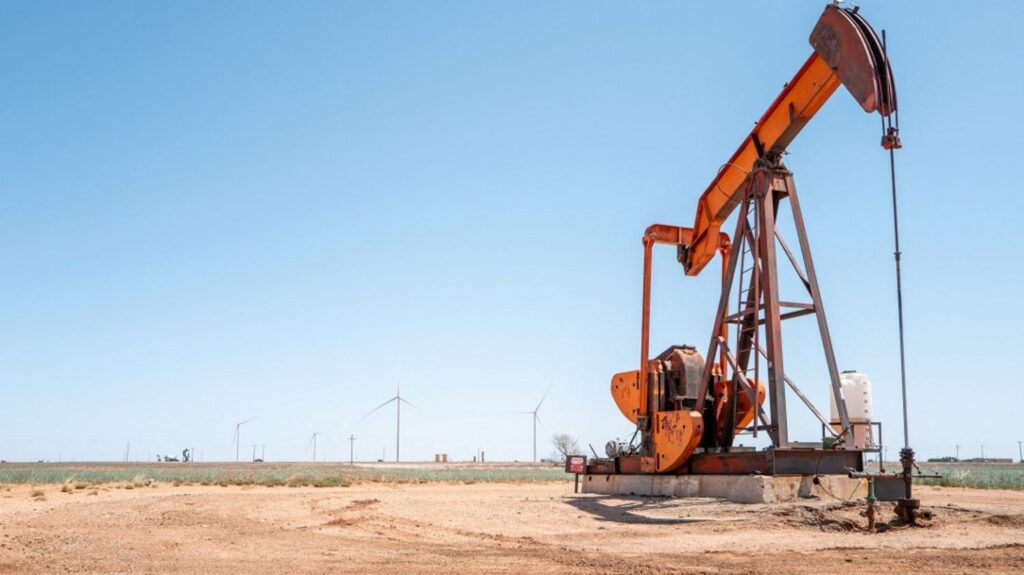/2023/07/06/64a6c14d842c3_antoine-deiana.png)
Published
Updated
Reading time: 4min
/2025/04/10/063-2209442497-67f75fd3e7e1b372862591.jpg)
The agreement signed between the European Union and the United States provides $ 750 billion (around 640 billion euros) in American hydrocarbon purchases. A massive commitment, which confirms already well established imports, always with the same objective: to do without Russian gas and oil.
The European Export Trade Agreement concluded this Sunday, July 27 between the United States and the European Union provides for a series of economic commitments, including a particularly spectacular energy component. Brussels promises to buy for $ 750 billion in American hydrocarbons over three years, or around 640 billion euros. These purchases mainly include liquefied natural gas (LNG), crude oil, refined fuels and nuclear fuels, according to the president of the European Commission Ursula von der Leyen.
This supply plan aims to reduce European energy dependence on Russia, in a context of sustainable tensions since the invasion of Ukraine in 2022. But several French officials, including Foreign Minister Laurent Saint-Martinhave put into perspective the scope of the agreement, believing that these volumes “correspond more or less to the fact that the energeticians had already granted between themselves. “”
Behind the announcements of the agreement, exchanges in terms of energies between the EU and the United States are actually already well installed. Eurostat Indicates that in the first quarter of 2025, the United States was by far the first provider of liquefied natural gas from the European Union, with 50.7 % of imported volumes, against 17 % for Russia and 10.8 % for Qatar. This American gas arrives mainly by French ports, in particular the Dunkirk terminal, today which is a strategic entry point, before being redistributed to Germany or Belgium.
Regarding crude oil, it is also the United States that dominates, with 15 % of European imports in the first quarter of 2025, ahead of Norway and Kazakhstan. Even if refined products (diesel, kerosene, aviation fuel) are not always deducted separately in these figures, they also represent rapid growth volumes since 2022, especially for French and German markets.
France is distinguished as one of the main American energy buyers in Europe. According to the data collected and analyzed by the KPLER OBSERVATORYFrance imported 4.8 million tonnes of American LNG in just four months in 2025, becoming the first European country over this period.
One of the displayed objectives of the agreement between Brussels and Washington is to replace Russian imports.
“We will replace Russian gas and oil with significant purchases of LNG, oil and American nuclear fuel.”
Ursula von der Leyen, president of the European CommissionDuring a press conference
It is true that Russia is still an active energy supplier for the European Union. According to the Center for Research on Energy and Clean Air (CREA)In June 2025, the EU paid around 1.47 billion euros to Russia in June 2025 for its purchases of fossil fuels, mainly liquefied natural gas and crude oil. This is union on the 4ᵉ largest world customer in Moscow, behind China, India and Turkey. Two member countries, Hungary and Slovakia, continue to import Russian crude oil thanks to a European exemption.
As for Russian gas, it still happens in the form of LNG, in particular via the Dunkirk terminal. In France, Russian LNG imports represented 232 million euros in June 2025, according to CREA. Part of this gas is then re -exported to other Member States, in particular to Germany.
“American LNG also makes it possible to get out of Russian gas. These are things in the interest of the European Union. But there is not much again in these purchasing commitments.”
Laurent Saint-Martin, French Minister of Foreign TradeOn France Inter
Even if these volumes are significantly lower than those of pre-war (Russia still provided 45 % of European gas in 2021, compared to 19 % in 2024) The energy cut with Moscow is far from finished. Brussels always targets A total end of Russian oil and gas imports by 2027.


